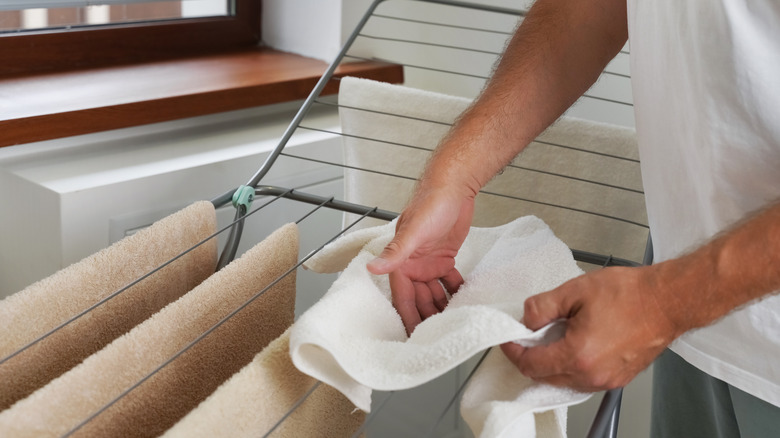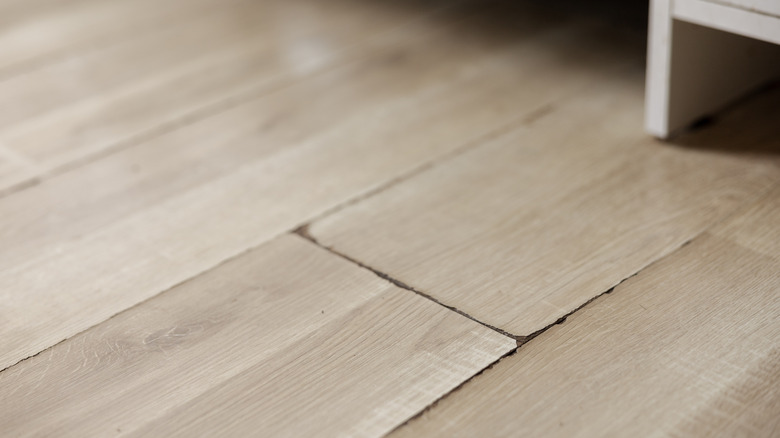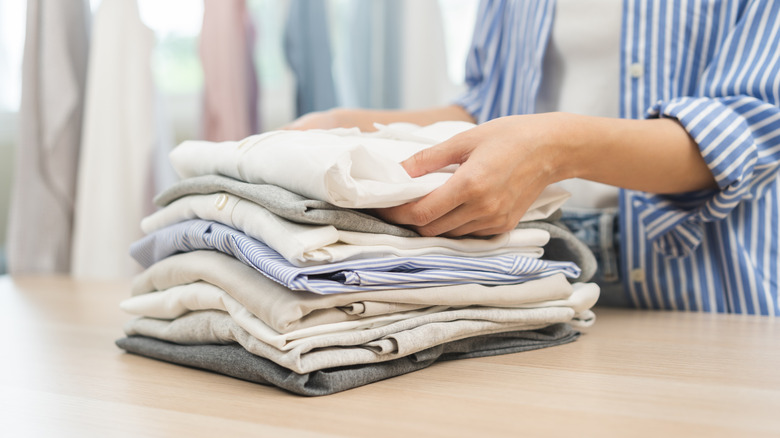The Downsides To Heated Airers That You Need To Know Before You Buy
We may receive a commission on purchases made from links.
Heated airers might sound like the next best thing since sliced bread, especially if you're tired of waiting three days for your clothes to dry in the winter. At first glance, this winter laundry hack seems like the perfect solution to your soggy socks and damp towels, right? But before you swipe your credit card and set up a heated airer in your cozy laundry room, you must know the downsides. They can cause serious damage to your floors if you're not careful, and they have a small load capacity that might leave you feeling frustrated after every laundry day.
Heated airers can be an absolute nightmare for your floors. While they might dry your clothes, they also cause moisture to build up underneath them. This extra humidity can damage your floors over time, leading to warping and peeling. Also, the heat can cause the floor beneath to overheat and weaken the protective finish, giving you a headache down the line.
You know those days when you've got a mountain of laundry to do and are eager to get it all dried as quickly as possible? A heated airer might not be your best friend in this situation. The load capacity of heated airers is pretty small compared to a regular clothesline or tumble dryer. If you're trying to dry a whole family's worth of laundry in one go, get ready for the reality check.
Tips to prevent floor damage by hated airers
While heated airers can cause floor issues, you don't have to toss them out the window. There are some tricks you can use to keep your floors safe. First off, position your heated airer away from furniture and walls. When your airer is too close to walls or any other surface, the heat has nowhere to escape, and it's bound to reflect onto the floor. Creating breathing room will help mitigate the impact and protect your floor from unnecessary heat exposure. Plus, it will give your airer the chance to work more efficiently.
Next, consider using a protective cover underneath the airer. A cover can act as a barrier between the heat and the floor, reducing the risk of damaging the surface below. You can easily find reusable mats or covers specifically designed for this purpose. These covers are usually made from heat-resistant materials, ensuring that even if the airer does get hot, your floor won't feel its full force.
Lastly, using a dehumidifier in the room can also help prevent humidity from destroying your floor. Dehumidifiers work by extracting moisture from the air, which means there's less humidity to interact with the heat from the airer. This not only helps your clothes dry faster, but also ensures the environment stays dry, preventing condensation from forming on the floor.
How to make the most out of your heated airer's small load capacity
So, the small load capacity is a bit of a letdown, but there are ways around this limitation to make the most out of your heated airer. First up, take advantage of vertical space. Many heated airers are designed with multiple levels or tiers, meaning you can hang clothes at different heights. This allows you to fit more items on the airer, even if it's struggling to accommodate them. By stacking your laundry vertically, you ensure the heat reaches all your clothes vertically without cramming too much at once.
Another option is to dry clothes in batches. It may seem like a bit of a chore, but it's an effective way to manage the small load capacity. Set a timer, and instead of trying to dry everything at once, divide your laundry into smaller, more manageable loads. While this might take more time, it's one way to make your clothes dry faster. Further, you get to enjoy the fresh smell of clothes drying in the air every single time.
Lastly, rotate your clothes regularly. This will help speed up the drying process without overloading the airer. Give each item a turn at the hottest part of the airer to ensure they all get an equal amount of drying time. By rotating your clothes on the airer, you ensure the heat is evenly distributed across all items. This helps them dry faster and prevents the airer from becoming overloaded and inefficient.


